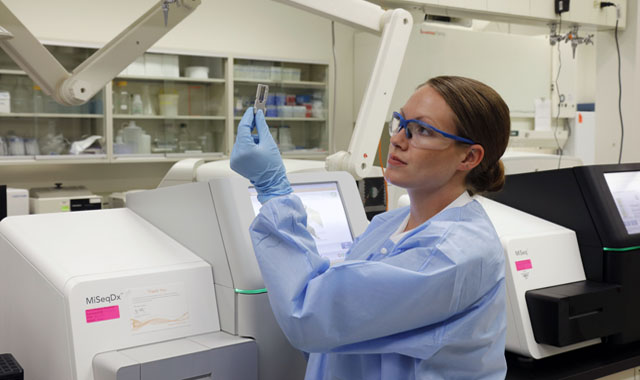What the MPS Feasibility Report Means for Forensic Science Today

While Massively Parallel Sequencing (also referred to as Next Generation Sequencing or NGS) has been the talk of DNA scientists for some time, it’s closer than ever to becoming a valid asset for law enforcement. For the first time, objective data is available to assess the feasibility of implementing MPS technology specifically within forensic casework.
According to an exhaustive report conducted by Battelle for the National Institute of Justice, MPS is primed for mainstream forensic adoption.
What is the MPS Feasibility Report?
In 2015, the National Institute of Justice (NIJ) awarded Battelle a critical grant to assess the technical readiness of MPS technology for forensic applications.
Over 19 months, Battelle research leaders worked tirelessly to organize, conduct and analyze the findings of a highly complex research project. To perform the analysis, Battelle included eight forensic laboratories to participate in the study—representing city, county, state, federal, academic and DNA research institutions.
The forensic labs that participated in the study are:
- Armed Forces DNA Identification Laboratory (AFDIL)
- Bureau of Alcohol, Tobacco and Firearms (ATF)
- California Department of Justice (CAL-DOJ)
- Federal Bureau of Investigation (FBI)
- Harris County Institute of Forensic Sciences (HCIFS)
- National Institute of Standards and Technology (NIST)
- New York Office of the Chief Medical Examiner (NYOCME)
- North Carolina State University (NCSU)
The outcomes of this highly focused study represent a catalytic moment for the forensic community.
An Overview of the Research Scope
At the highest level, the study consisted of two key phases: performance testing and inter-lab testing. Below, we will briefly describe the key objectives and outcomes of each phase of the study.Phase 1: MPS Performance Testing
To begin the MPS assessment study, researchers and partner labs worked together to identify the requirements and evaluation criteria. Those criteria focused on the following categories:
- Sensitivity
- Precision
- Accuracy
- Reproducibility
- Concordance
- Mixtures
- Illumina
- NCSU
- Promega
- ThermoFisher Scientific
- Agilent
Phase 2: Inter-laboratory Testing
In Phase 2 of the project, standardized DNA samples were sent to each of the partner laboratories for analyses. This process was designed in a way to strategically progress across the established validation categories mentioned above.
The results were extremely impressive.
Laboratories performing the same workflows, and using the same instruments and software produced results that were concordant with each other. These are critical observations from a technology transfer perspective, considering the study’s data was generated from a range of laboratories varying in size and mission. This includes those gaining their first exposure to the MPS (NGS) technology through this study to those with considerable experience in the technology.
4 Key Takeaways from the NIJ Report
The data compiled in the report provides an objective assessment of the NGS technology for forensic applications to include strengths, vulnerabilities and opportunities for improvement. The results hold promising potential for DNA scientists and DNA technical leaders around the country.Key takeaways include the following:
- MPS data is robust, reliable, reproducible and sensitive across laboratories performing the same workflows using the same instruments and software.
- The emergence of Massively Parallel Sequencing (MPS) presents opportunities for potential success beyond conventional CE-based techniques, specifically with respect to degraded specimens (missing persons) and possibly complex samples (mixtures).
- Genotypes were generally consistent with truth data obtained from capillary electrophoresis typing, with the typical limitations related to the particular sample genotypes and thresholds employed in each workflow. Sensitivity studies showed expected imbalance issues.
- The studied MPS technologies and workflows produce results that are reliable and accurate for criminal investigation.
What’s Next for MPS and the Forensic Community?
We believe we are at a watershed moment for MPS and mainstream forensic adoption.The data generated by this research study, combined with the critical insight from participating thought leaders of the forensic DNA community, can facilitate the development of a strategic roadmap for implementation of NGS into forensic casework laboratories.
It’s an imperative that will deliver significant benefits to the public, victims of crimes or disasters, and the wrongfully accused.
BATTELLE UPDATES
Receive updates from Battelle for an all-access pass to the incredible work of Battelle researchers.